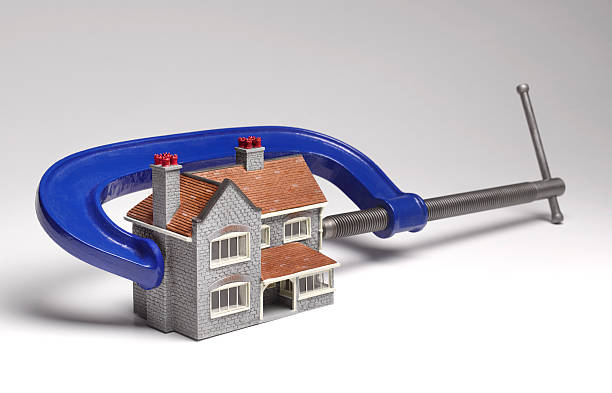 The burden of overextended personal debt extends far beyond a simple numbers on a ledger; it manifests as a relentless and pervasive form of financial stress that infiltrates every corner of an individual’s life. This stress is not a fleeting worry but a constant, low-grade hum of anxiety that accompanies every purchase, every unexpected expense, and every quiet moment of reflection. It transforms financial management from a routine task into a source of deep psychological strain, impacting mental well-being, personal relationships, and even physical health.This anxiety is rooted in a profound loss of control and a feared future. The relentless cycle of monthly payments, where a significant portion of income is allocated to servicing past consumption rather than present needs or future security, creates a sensation of running in place. The knowledge that an unforeseen event—a car breakdown, a medical bill, a reduction in work hours—could instantly topple the precarious balancing act leads to a state of hyper-vigilance. Sleep is lost over calculating how to make ends meet, and the mailbox becomes a source of dread, potentially containing another bill or a past-due notice. This constant state of alarm triggers a physiological stress response, which, over time, can contribute to serious health issues like hypertension, depression, and a weakened immune system.Furthermore, financial stress is intensely isolating. Shame and embarrassment often prevent individuals from discussing their struggles openly, even with close family members. This secrecy can breed resentment and conflict within relationships, as spending habits are scrutinized and tough choices about priorities must be made. The weight of debt can stifle ambition and risk-taking, as the security of a steady paycheck becomes paramount, trapping individuals in unsatisfying jobs and limiting personal and professional growth.Ultimately, the stress of overextended debt creates a paradox: the very tools meant to provide convenience and opportunity—credit cards, loans, and financing plans—become the instruments of confinement. They dictate life choices, curtail freedom, and cast a long shadow over one’s future prospects. The path to relief is not merely a mathematical equation of debt repayment but a journey toward reclaiming a sense of agency, reducing the mental burden, and restoring the peace of mind that is the ultimate casualty of financial overextension.
The burden of overextended personal debt extends far beyond a simple numbers on a ledger; it manifests as a relentless and pervasive form of financial stress that infiltrates every corner of an individual’s life. This stress is not a fleeting worry but a constant, low-grade hum of anxiety that accompanies every purchase, every unexpected expense, and every quiet moment of reflection. It transforms financial management from a routine task into a source of deep psychological strain, impacting mental well-being, personal relationships, and even physical health.This anxiety is rooted in a profound loss of control and a feared future. The relentless cycle of monthly payments, where a significant portion of income is allocated to servicing past consumption rather than present needs or future security, creates a sensation of running in place. The knowledge that an unforeseen event—a car breakdown, a medical bill, a reduction in work hours—could instantly topple the precarious balancing act leads to a state of hyper-vigilance. Sleep is lost over calculating how to make ends meet, and the mailbox becomes a source of dread, potentially containing another bill or a past-due notice. This constant state of alarm triggers a physiological stress response, which, over time, can contribute to serious health issues like hypertension, depression, and a weakened immune system.Furthermore, financial stress is intensely isolating. Shame and embarrassment often prevent individuals from discussing their struggles openly, even with close family members. This secrecy can breed resentment and conflict within relationships, as spending habits are scrutinized and tough choices about priorities must be made. The weight of debt can stifle ambition and risk-taking, as the security of a steady paycheck becomes paramount, trapping individuals in unsatisfying jobs and limiting personal and professional growth.Ultimately, the stress of overextended debt creates a paradox: the very tools meant to provide convenience and opportunity—credit cards, loans, and financing plans—become the instruments of confinement. They dictate life choices, curtail freedom, and cast a long shadow over one’s future prospects. The path to relief is not merely a mathematical equation of debt repayment but a journey toward reclaiming a sense of agency, reducing the mental burden, and restoring the peace of mind that is the ultimate casualty of financial overextension.
Each formal application triggers a hard inquiry, which temporarily lowers your credit score. Multiple applications in a short time signal high risk to lenders and can further damage your score, reducing approval chances.
Contact the provider immediately to explain your situation. Many offer payment plans, extensions, or hardship programs to avoid shut-offs or collections.
Minimum payments mostly cover interest, not principal, prolonging debt repayment and costing more over time. This can also signal financial stress to lenders.
Credit card companies generally report your balance and credit limit to the bureaus once per month, usually on your statement closing date. This is the balance that gets calculated into your score.
BNPL plans allow small, manageable payments but can encourage overspending. Multiple BNPL agreements can silently accumulate, creating a significant monthly burden that suddenly contributes to overextension.